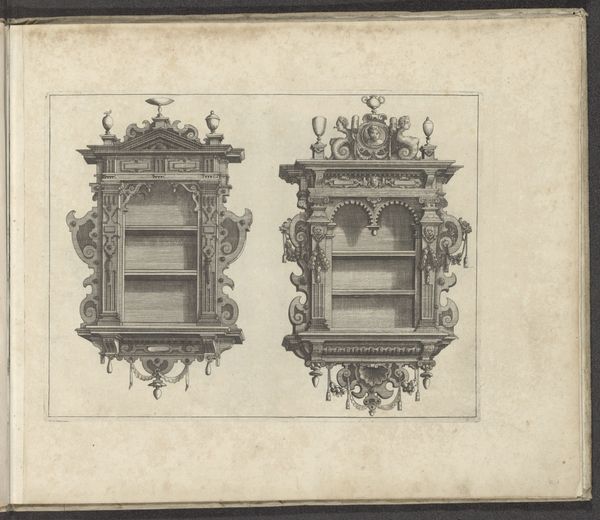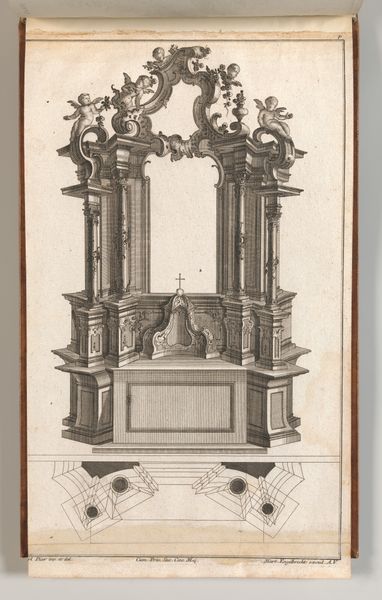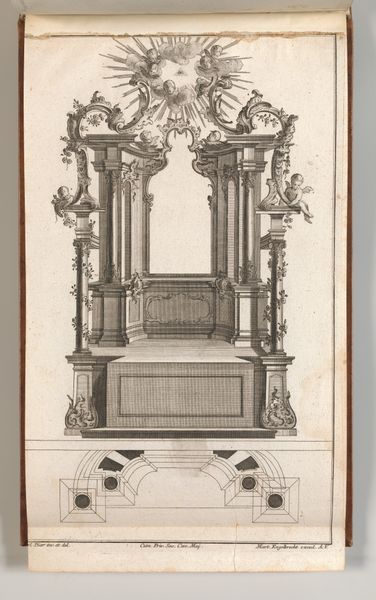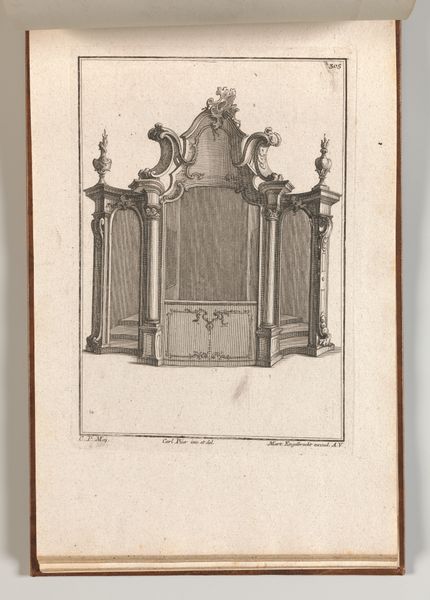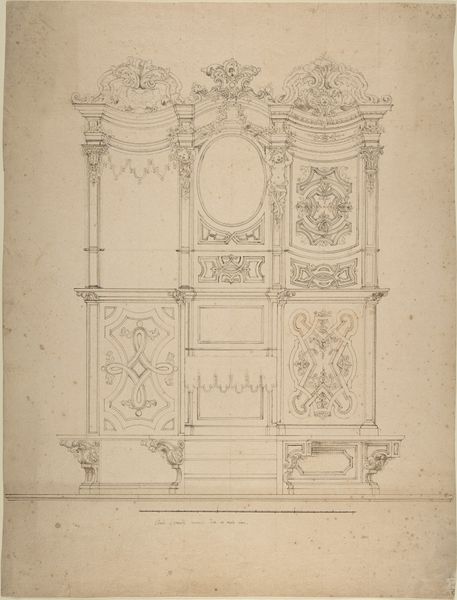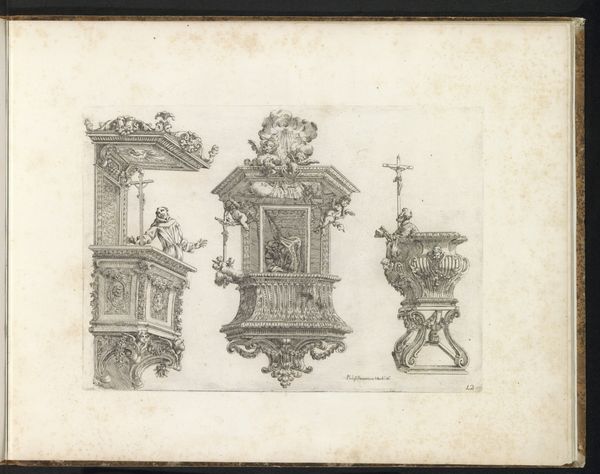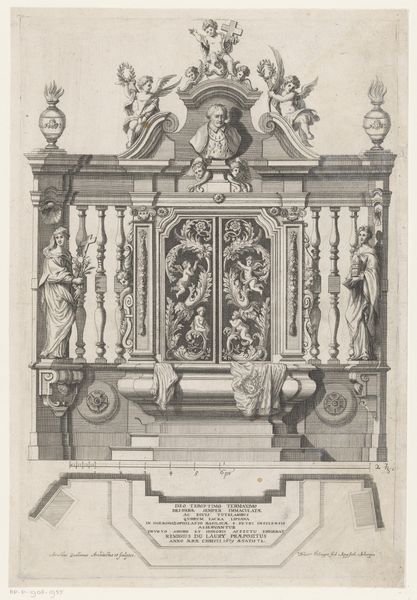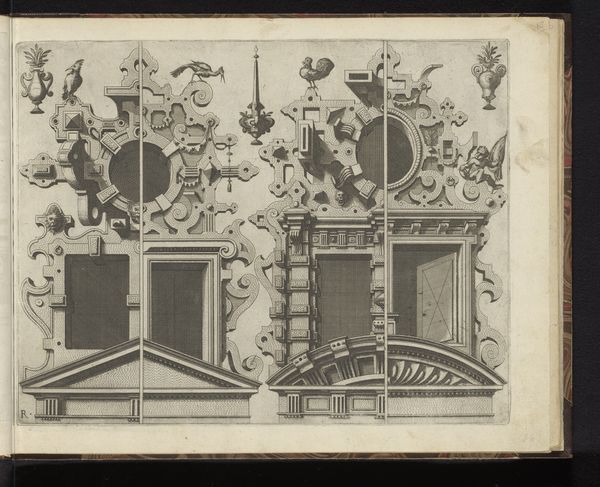
drawing, pen, engraving, architecture
#
drawing
#
form
#
11_renaissance
#
coloured pencil
#
pen-ink sketch
#
line
#
pen
#
engraving
#
architecture
Dimensions: height 235 mm, width 300 mm
Copyright: Rijks Museum: Open Domain
Curator: I am immediately struck by how ornate and somewhat unsettling these windows appear. It’s as if a building is trying to flaunt its status. What do you think? Editor: This is an engraving called "Vier halve lucarnes," or "Four Half Dormers," made around 1565 by Johannes or Lucas van Doetechum. We believe these renderings showcase potential architectural designs. It offers insight into the aesthetic sensibilities of the Renaissance. Curator: So, not real windows then, more like daydreams etched in ink. Looking closer, there’s such a density of detail, a kind of joyful mania in the embellishments. You almost expect them to start crawling off the page! Do you imagine these are pure fantasy? Editor: They are architectural fantasies, yes, but also firmly rooted in the culture of display and power that defined the Renaissance. Consider how wealthy families would want to exhibit their status. This plate may well have offered patterns that could actually be built. Curator: You’re right. It's tempting to see the gargoyle figure supporting the first window frame as an ancestor caught in the architecture, destined to repeat it forever. Each design becomes its own kind of statement of legacy. I get a strong sense of legacy but also being stuck, how interesting! Editor: The Renaissance was a time of huge social upheaval, with new money clashing against old aristocratic forms. Art, including architectural drawings like these, became a key way to negotiate status, aspiration, and social competition. Curator: It’s almost as if each twist and flourish in the engraving represents someone’s attempt to climb higher, isn't it? Editor: Precisely. Curator: Looking at these windows reminds me that architecture has always been a statement. Editor: And in the Renaissance, that statement was designed to be as loud and ornamented as possible. I am glad we had the opportunity to cast some light on this today!
Comments
No comments
Be the first to comment and join the conversation on the ultimate creative platform.


